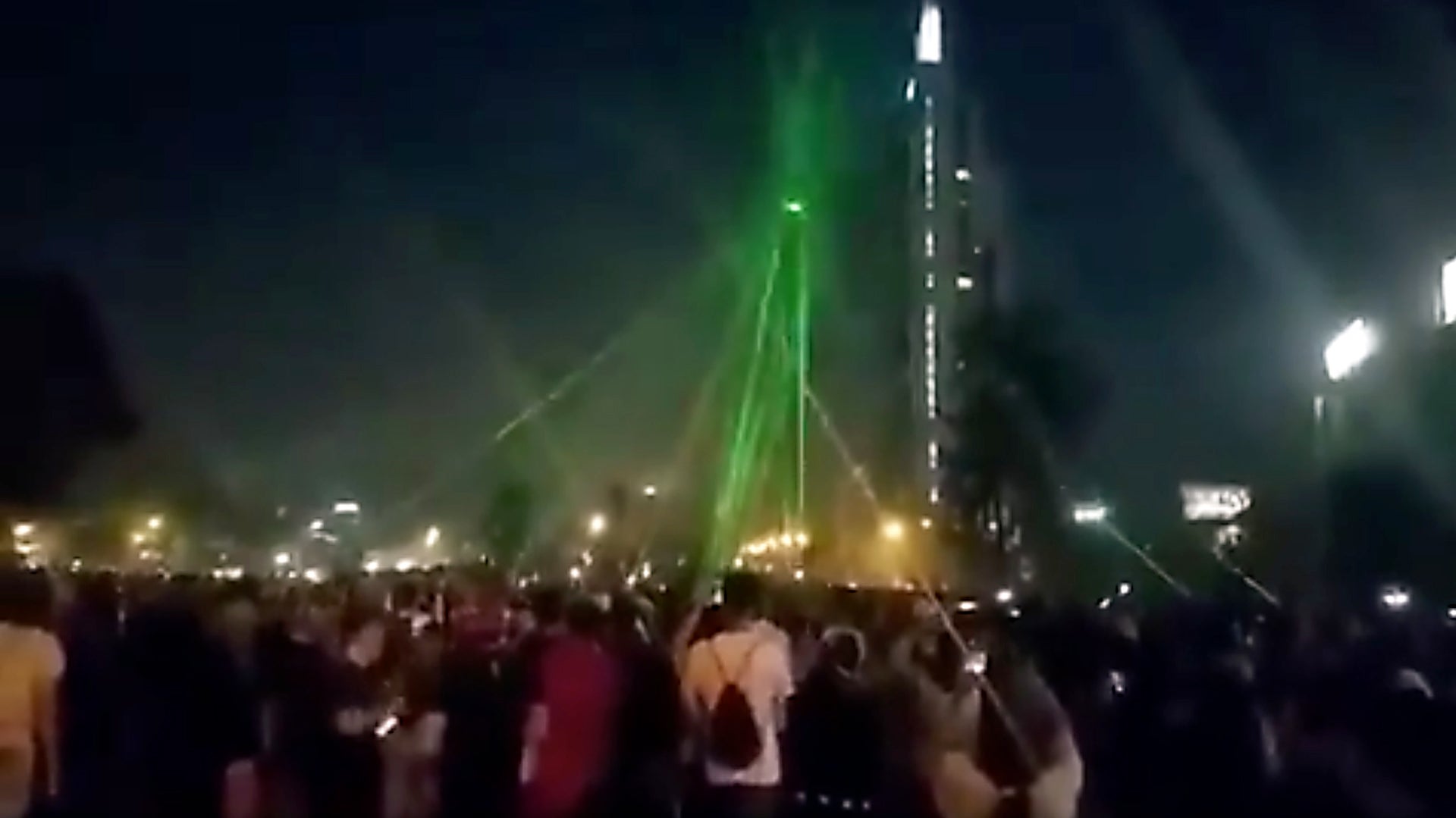One of the key topics we discuss here at The War Zone constantly is counter-drone and short-range air defense capabilities, or the glaring
lack thereof, and other directed energy defensive systems. One such capability that is emerging as an immediately obtainable and potentially robust solution to countering some drones and missiles that rely on electro-optical and infrared guidance systems are laser dazzlers. Basically, they fire a modulated laser beam at the target, blinding its optical sensors and throwing it off track and even downing it as a result. They can also be used to limit an enemy’s ability to gather intelligence via manned platforms by blinding their sensors. It looks like a very low-end and impromptu version of this concept was put to work by Chilean protesters very recently.
The video, which appeared on social media earlier in the week, shows a large gathering of protesters shining high-powered handheld laser pointers, which have been used by protesters recently to deter riot police and blind facial recognition cameras, at a drone overhead. Those devices, shining at the drone’s optics from all different angles, sent it wobbling through the air, before briefly recovering, just to nosedive again and crash into the ground. Check out the video for yourself:

Some smaller hobby and commercial drones have various autopilot systems and fail-safe software that allows them to maintain safe flight and even return to their original point of origin if they lose contact with their controller, but even with those capabilities, they wouldn’t engage automatically if their camera was blinded. Things happen fast and even engaging a fail-safe mode would have to be done by the user quickly once their video feed is blinded. Regardless, in this case, the laser pointers meant certain death for the lurking drone in question.
While laser countermeasures that dazzle the infrared seekers on short-range heat-seeking missiles have been a reality for many years—they are even finding their way onto fighters now—more powerful and advanced dazzlers are now entering the maritime environment. Russia has already fielded a dazzler system on some of their surface combatants and the U.S. Navy has just installed its first dazzler, named ODIN, on the Arleigh Burke class destroyer USS Dewey (DDG-105). You can read all about this new system in this recent piece of ours.
The impromptu downing of the small drone in Chile via lasers is definitely timely and the use of consumer-grade lasers could become a common application for fending off drones in no-drone airspace and other sensitive areas. Just blinding their optics and thus eliminating their reason for being overhead—to capture video for various reasons—could be enough to deter some of them from flying in the first place. Tying in a few dazzlers dispersed around a large area into a counter-drone system with detection capabilities could make flying one over a denied area entirely useless in the first place.
The only major issue with such a concept is target discrimination. The same lasers that can blind drone optics may also blind human pilots, which continues to be a big problem domestically and abroad. But many counter UAS systems use modular radars, passive electronic sensors, and their own infrared cameras to better classify potential drone threats. As such, using the lower power dazzlers could be a fairly low risk and obtainable way of keeping unwanted drones at bay.
So yeah, those protesters were definitely on to something.
UPDATE:
There is a claim and circulating that the drone’s landing was controlled enough for the owner to retrieve it. A video online supposedly shows a drone operator in the crowd after landing a drone. Obviously, drones are very common at these types of things, often with multiple types overhead at any given time. So, we can’t be certain this was the drone in question and its operator, but it would seem likely considering the account and video. If it was, we still don’t know why it made the erratic landing or why the operator brought it down at all, to begin with. As the article states, it is likely because he could barely see anything via its video stream once the lasers were on the drone, but maybe there were other factors.
Contact the author: Tyler@thedrive.com
